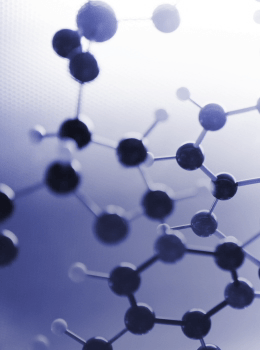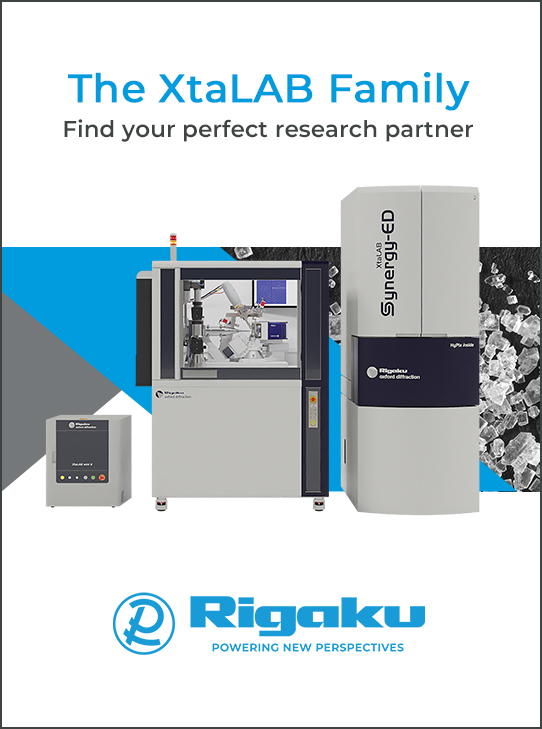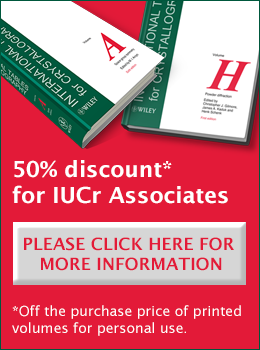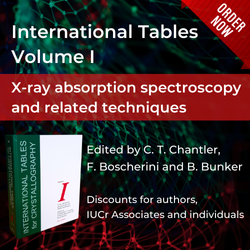
Meeting report
SEA COAST 2024: Comprehensive training course in macromolecular structure determination in Thailand
![Thumbnail [Thumbnail]](https://www.iucr.org/__data/assets/image/0008/158840/Thumbnail.jpg)
The organizers treated the participants to an excursion to Mullika old town in Kanchanaburi Province, where they learned about aspects of Thai traditions and farming.
From 29 January to 7 February 2024, King Mongkut’s University of Technology Thonburi (KMUTT) in Bangkok, Thailand, hosted the third macromolecular structure determination training course entitled South East Asian Crystallographic Overview And Systematic Training (SEA COAST). The course was organized jointly by Leela Ruckthong and Ruslan Sanishvili (KMUTT, Thailand), Ronan Keegan (CCP4, STFC Rutherford Appleton Laboratory, UK) and Garib Murshudov (MRC LMB, UK).
Two prior courses at KMUTT were held in 2019 and 2020, but this was the first one after the COVID-19 outbreak. The training course, which covered all aspects of macromolecular crystallography, was designed to benefit researchers at various levels of their expertise. The course comprised the theoretical foundation and general principles of macromolecular crystallography, and of specific software programs, along with software tutorials. A significant portion of the time was dedicated to problem-solving sessions where the participants worked on their own crystallographic projects under the tutelage of the experts.
Applicants
Within the SEA COAST training series, we strive to bring the world’s most advanced expertise to the Southeast Asian region, although we do not limit participation to this region. Graduate students, postdoctoral researchers and young scientists, from both academia and industry, who have a background in protein X-ray crystallography or are interested in it were encouraged to apply. For SEA COAST 2024, applications were accepted from Thailand, Malaysia, India, Hong Kong, Japan, UK and Austria.
Topics
Macromolecular crystallographic topics, such as crystallization, diffraction basics, data collection and processing, structure determination with experimental phasing and molecular replacement, AlphaFold-generated models for molecular replacement, molecular graphics, model building, structure refinement, model validation, ligands and bioinformatics were taught by some of the world-leading experts. The course also included introductory lectures on cryo-EM and neutron crystallography.
Software programs such as the CCP4 suite, Phenix suite, AutoProc, DIALS, MOSFLM, XDS, Arp/wARP, Coot, Phaser, ARCIMBOLDO, VAIRO, BUSTER, REFMAC and PISA were taught during the course.
Instructors
Overall, 22 instructors took part in the course: Terese Bergfors, Uppsala University, Sweden; Grzegorz Chojnowski, EMBL, Germany; Kay Diederichs, Universität Konstanz, Germany; Maria Fando, CCP4, UK; Dave Hall, Diamond Light Source, UK; Robbie Joosten, NKI AvL, Netherlands; Ronan Keegan, CCP4, Harwell, UK; Eugene Krissinel, CCP4, Harwell, UK; Andrey Lebedev, CCP4, Harwell, UK; Andrew Leslie, MRC LMB, Cambridge, UK; Dorothee Liebschner, Lawrence Berkeley National Laboratory, USA; Bernhard Lohkamp, Karolinska Institutet, Sweden; Garib Murshudov, MRC LMB, Cambridge, UK; Dean Myles, Oak Ridge National Laboratory, USA; James Parkhurst, Diamond Light Source, UK; Randy Read, Cambridge Institute for Medical Research, UK; Marasri Ruengjitchatchawalya, KMUTT, Thailand; Ruslan Sanishvili, KMUTT, Thailand; Sofia Trampari, Dectris, Switzerland; Isabel Uson, IBMB CSIC, ICREA, Spain; Clemens Vonrhein, Global Phasing Ltd, UK; and Martyn Winn, STFC, UK.
![[Fig. 1]](https://www.iucr.org/__data/assets/image/0020/159005/Fig.-1.jpg)
Daily schedule
Typically, the first half of the day was dedicated to the lectures covering the topics of the day. They were followed by software tutorials and then by interactive problem-solving sessions where the tutors worked with students one-on-one or in small groups. The problem-solving sessions lasted till 22:00 and sometimes later.
The organizers also provided on-site catered coffee breaks, lunch and dinner. These were an integral part of the course as they fostered informal discussions between the participants – both students and instructors.
![[Fig. 2]](https://www.iucr.org/__data/assets/image/0003/159006/Fig.-2.jpg)
![[Fig. 3]](https://www.iucr.org/__data/assets/image/0004/159007/Fig.-3.jpg)
![[Fig. 4]](https://www.iucr.org/__data/assets/image/0005/159008/Fig.-4.jpg)
New additions
There were some exciting new additions to our typical content. For the first time in the SEA COAST series, we added crystallographic data collection from students’ crystals, conducted remotely on the I04 beamline of the Diamond Light Source (DLS). We also added introductory lectures in cryo-EM by Martyn Winn, Randy Read and Garib Murshudov.
Dean Myles overviewed the method of neutron crystallography and caused quite a buzz when he revealed a new development in the field. Oak Ridge National Laboratory is building a new beamline to take advantage of spin alignment and anti-alignment of neutrons and protons, which should dramatically increase the signal-to-noise ratio, thus reducing the required sample size for data collection. In addition, deuteration of the sample will no longer be needed, significantly improving the accessibility of the method.
![[Fig. 5]](https://www.iucr.org/__data/assets/image/0006/159009/Fig.-5.jpg)
![[Fig. 6]](https://www.iucr.org/__data/assets/image/0016/159010/Fig.-6.jpg)
![[Fig. 7]](https://www.iucr.org/__data/assets/image/0017/159011/Fig.-7.jpg)
![[Fig. 8]](https://www.iucr.org/__data/assets/image/0018/159012/Fig.-8.jpg)
Results
Twelve students had one or more challenging crystallographic problems to resolve. They had brought either the data (raw or processed), crystals or both to work on. Out of ten participants who tried data collection at DLS, six had diffracting crystals of one or several proteins and their modifications. Data measured during the course typically were of higher quality than prior data (when available). Several challenges could not be overcome as they were related to non-diffracting or very poorly diffracting crystals. In all other cases, students made significant progress in their projects during the course. Several structures of new mutant proteins and/or their complexes with desired ligands were solved and refined. In some cases, the absence of ligands was confirmed. One new structure was solved and refined as well. There was one exception. One set of well-diffracting crystals produced data with a non-trivial anomaly. This was true for data collected during the workshop and data measured previously. This problem could not be resolved during the course, and several experts were spurred to continue investigating the issue after the workshop.
There were a few novice participants with no specific crystallographic problems to work on. The workshop proved very useful for them as well, as they were able to enhance their understanding of the basics and were encouraged to further pursue their efforts to solve structures.
Feedback
A few quotes below, which were edited only for grammar, indicate the overall success of the course:
“All experts were very much involved in problem solving. We had complete guidance from beginning to end of the session”.
“My understanding of fundamentals has improved substantially after the workshop, and I learned a variety of new features of programs that I did not know before”.
“Please keep the workshop going for the coming years. This workshop will help to grow a community of structural biologists in Thailand and South East Asia”.
Future
Encouraged by the response from the students, and the enthusiasm of the speakers, we intend to organize this training course regularly. We will further expand the cryo-EM and neutron crystallography parts of the course. We will continue X-ray diffraction data collection from the students’ crystals and will eventually include data collection for cryo-EM and neutron diffraction as well.
Acknowledgments
We would like to express our gratitude to the Ministry of Higher Education, Science, Research and Innovation (MHESI) of Thailand, and the Science and Technology Facilities Council (STFC) of the UK for their generous funding of SEA COAST 2024. Additional funding was provided by the Faculty of Science of KMUTT, the Chemistry Department of KMUTT, the Protein Society of Thailand and MiTeGen. Computers used in the workshop were supplied by the Department of Mathematics, KMUTT. We are especially grateful to Dectris, whose generous sponsorship made the data collection at the DLS possible. We would also like to thank Dave Hall, Felicity Bertram, Marco Mazzorana and David Aragao for their support in preparation for and during data collection. We are also grateful to the KMUTT management for their overall support of the project.
Copyright © - All Rights Reserved - International Union of Crystallography








